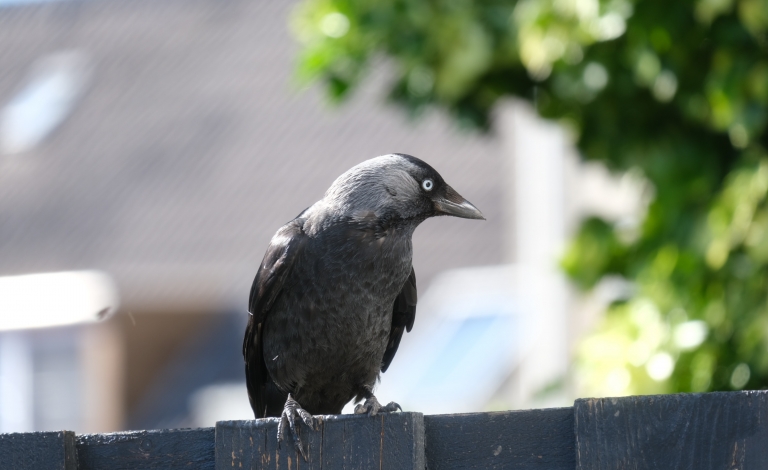Crows, magpies and other corvids
Crows, or corvids, are a family of medium-sized birds with strong, scaly feet, and stout, powerful beaks. They are mostly black in colour but some species are patterned with white, grey or brown feathers.
Northern populations of some species migrate but most stay in Scotland all year round.
That’s wild
Scientists believe crows to be as smart as a seven-year-old child. Studies have shown that they can solve puzzles, use twigs and rocks as tools to get to food, and even remember human faces and voices!
The crow family includes eight species; carrion (common) crows, hooded crows, jackdaws, jays, magpies, rooks and ravens are widespread across Scotland whereas the chough population is very small and isolated to islands off the west coast.




Corvids get a bad rap by some for eating the chicks and eggs of other birds, as well as small mammals. This is their natural behaviour and, as they are omnivorous, their natural diet also consists of insects, seeds, nuts, fruit and grains.
Many crow species will venture into gardens looking for scraps of human food too.
That’s wild
Jays enjoy eating acorns and have been known to bury them in the summer and dig up the tasty treat again in the winter.
When are baby corvids born?
Adult crows start building their nests as early as late February and start laying eggs from early to mid-April. Females lay around three to seven eggs in a clutch and incubate them for around 18 – 25 days depending on the species.
After the chicks hatch, they stay in the nest for around 30 days before learning to fly.
Will a corvid attack me?
As with all wild birds, corvids are very protective over their nests, particularly during breeding season. If they feel threatened, they can dive and strike repetitively until the threat moves away from the nest.
Common problems for corvids
Sick or injured
If you come across a corvid that has been injured or looks sick, please place a box over them and call our helpline on 03000 999 999.
Signs to look for include:
• Obvious injuries.
• An adult corvid that is unable to fly.
• Being caught and injured by another animal.
• Seeming lethargic or not moving.
• Tangled in litter.
• Twitching or head-shaking.
• Falling over, trembling or convulsing.
• Walking around in circles
• Holding their head at an abnormal angle
Threat from domestic animals
Corvids will usually be able to avoid capture by domestic animals, however, if they’re already ill or injured, or just taken by surprise, they might not be able to fly away.
Bad reputation
Their natural diet has given people an unfavourable opinion of corvids. Because they scavenge through rubbish left behind by humans and eat crops from fields and gardens, people see them as a nuisance.
Corvids are also seen as predators because they eat other birds' eggs and chicks. As a result, they are sometimes blamed with the overall decline in garden bird numbers.
Problems with plumage
White feather is a condition that causes loss of colour in the feathers. There’s no need to worry if you see a corvid with a few white feathers that looks otherwise healthy. However, plumage in poor condition or the presence of lots of white feathers is a sign that the bird is likely very ill.
Larsen traps
Larsen traps are commonly used to trap corvids where there are problems with for the conservation of wild birds or for the prevention of serious damage to livestock or crops. The use of Larsen traps is restricted to licenced individuals who must understand and comply with a set of strict conditions. Adequate food, water, shelter and a suitable perch must be available for the decoy bird at all times and traps must be checked every 24 hours. An ID tag must be attached to the cage. If you believe a Larsen trap is being used incorrectly, please contact our helpline on 03000 999 999.
